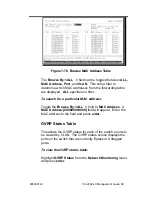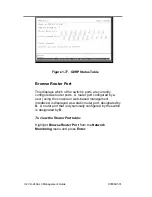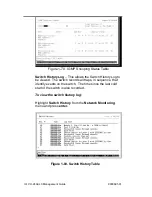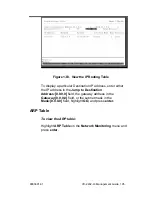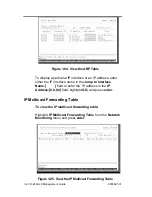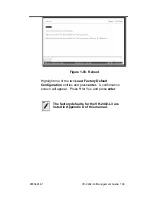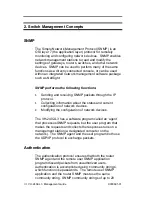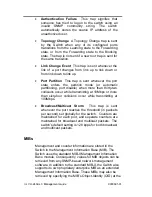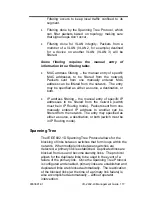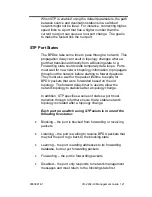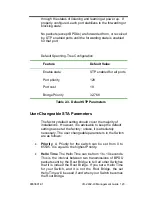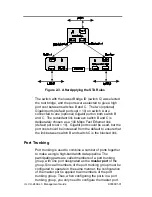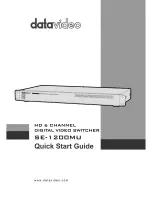
9033691-01
VH-2402-L3 Management Guide 113
characters may be entered under the
Remote Management
Setup
menu of the console program.
Traps
Traps are messages that alert network personnel of events
that occur on the Switch. The events can be as serious as a
reboot (someone accidentally turned OFF the Switch), or
less serious like a port status change. The Switch generates
traps and sends them to the trap recipient (or network
manager).
Trap recipients are special users of the network who are
given certain rights and access in overseeing the
maintenance of the network. Trap recipients will receive
traps sent from the Switch; they must immediately take
certain actions to avoid future failure or breakdown of the
network.
You can also specify which network managers may receive
traps from the Switch by entering a list of the IP addresses of
authorized network managers. Up to four trap recipient IP
addresses, and four corresponding SNMP community strings
can be entered.
SNMP community strings function like passwords in that the
community string entered for a given IP address must be
used in the management station software, or a trap will be
sent.
The following are trap types the switch can send to a trap
recipient:
•
Cold Start
This trap signifies that the Switch has
been powered up and initialized such that software
settings are reconfigured and hardware systems are
rebooted. A cold start is different from a factory reset
in that configuration settings saved to non-volatile
RAM used to reconfigure the switch.
•
Warm Start
This trap signifies that the Switch has
been rebooted, however the POST (Power On Self-
Test) is skipped.

